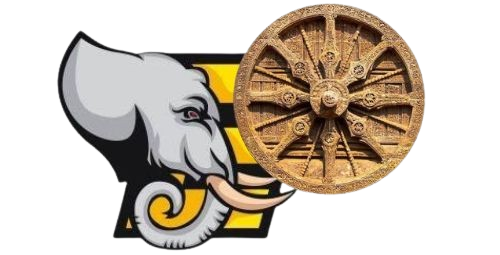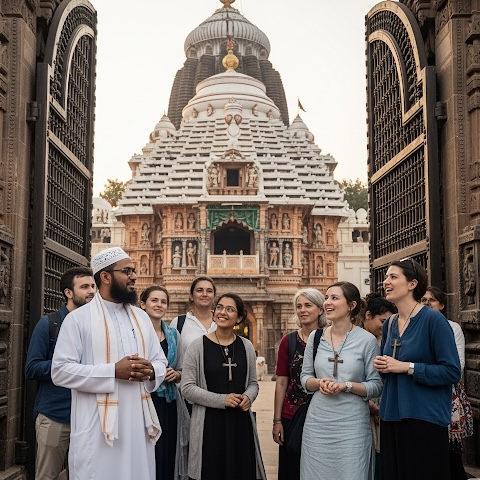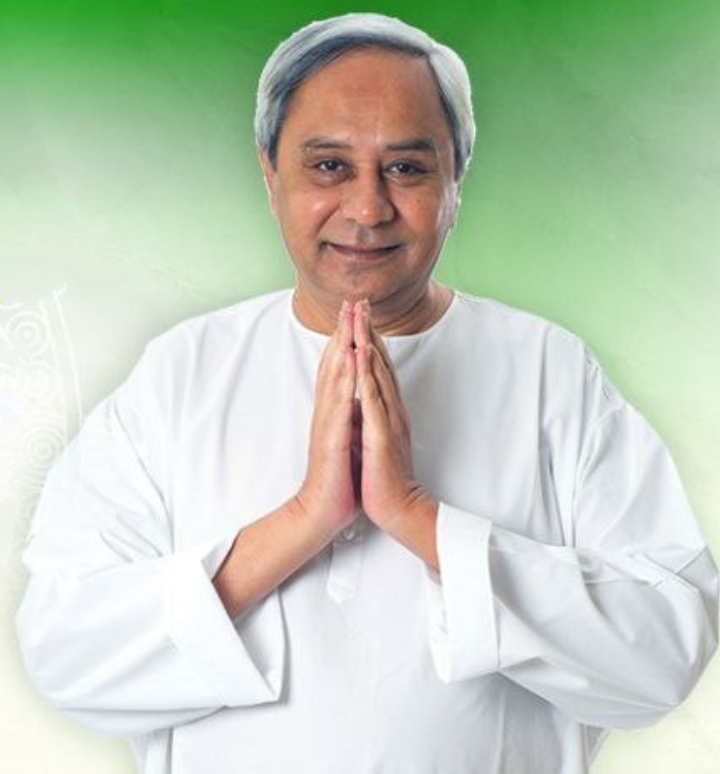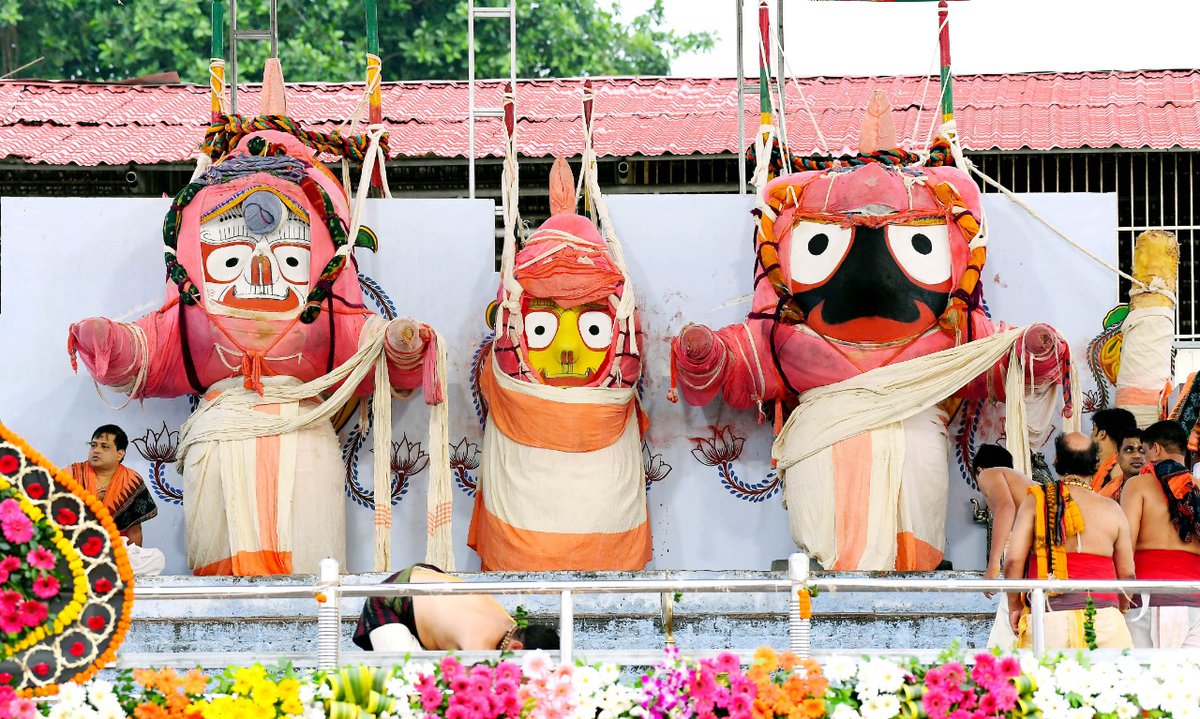The Jagannath Temple of Puri, Odisha, is one of the most sacred and ancient religious sites in India. Revered as one of the Char Dham pilgrimage sites for Hindus, this majestic 12th-century temple dedicated to Lord Jagannath, a form of Lord Vishnu, holds unparalleled spiritual and cultural significance. However, one of the most debated aspects of this temple is the restriction on the entry of non-Hindus, including followers of other religions and even some sects within Hinduism.
This exclusion has sparked curiosity, criticism, and controversy for decades. To understand this restriction in its entirety, one must delve deeply into the history, origin, scriptural interpretations, cultural identity, and ritual sanctity of the Jagannath Temple.
The Rule: What Is Prohibited?
The Jagannath Temple’s entry rule clearly states that non-Hindus are not allowed inside the temple complex. This includes:
- Followers of other religions such as Islam, Christianity, Judaism, Buddhism, and others.
- Foreign tourists or individuals of non-Indian origin, unless they can prove adherence to Sanatana Dharma.
- In some interpretations, even certain sects within Hinduism (such as Ravidasis or some reformist movements) are sometimes viewed with caution.
However, all people, irrespective of religion or nationality, are allowed to witness the Rath Yatra, when the deities come out of the sanctum and travel in chariots along the streets of Puri—a rare moment of divine inclusivity.
The Historical Origins of the Rule
The practice of restricting non-Hindus from entering the Jagannath Temple is not a modern invention. It can be traced back to the Gajapati dynasty, particularly during the rule of Ananga Bhima Deva III in the 13th century, when the temple was formally institutionalized.
During medieval times, India experienced successive waves of invasions—first by Islamic rulers and later colonial powers. The Jagannath Temple, like many others, was looted, desecrated, and threatened with destruction multiple times. As a result, rigid entry rules were enforced to protect the sanctity of the shrine and prevent future violations.
Some scholars believe this restriction was reinforced after the attack by Kalapahad, a general of the Bengal Sultanate, in the 16th century, who is believed to have defiled the temple. From that time, a deep sensitivity toward the temple’s purity emerged.
Spiritual and Ritual Justifications
The Jagannath Temple is not just a place of worship; it is a living temple where daily rituals—ranging from bathing, dressing, cooking, singing, and ceremonial offerings—are conducted as if the deity is a living being. These rituals follow specific Vedic and Tantric codes passed down through centuries.
Key spiritual reasons for the restriction include:
1. Preservation of Ritual Purity (Shuddhi)
The temple is governed by strict codes of purity, which include both physical and spiritual cleanliness. The priests (Sevayats) must perform rituals without any interruption or deviation from prescribed norms. In Hindu tradition, certain non-Hindu influences are considered spiritually incompatible with Vedic energy, potentially disrupting the ritualistic environment.
2. Jagannath as Tribal and Vedic Syncretism
Lord Jagannath is a rare deity who fuses tribal, Shaivite, Vaishnavite, and Buddhist elements. While His form is inclusive in philosophy, the ritualistic practices are deeply rooted in Brahmanical traditions. This creates a paradox where the deity symbolizes inclusiveness, but the temple practices maintain exclusivity for ritual precision.
3. Sanctum Sanctorum as ‘Chidakasha’
The Garbhagriha (inner sanctum) of the temple is seen as Chidakasha (the sky of consciousness)—a metaphysical space where only those initiated into Sanatana Dharma may access the divine frequency. Allowing non-initiates is believed to disturb the energy or vibrational sanctity.
Colonial and Post-Colonial Context
During British rule, Christian missionaries and colonial officials tried to intervene in temple matters. Their approach often lacked respect for native spiritual practices. This deepened the mistrust and pushed temple authorities to tighten control over entry, solidifying the exclusion rule.
Even in post-independent India, this restriction has been challenged legally and socially. In 1984, Indira Gandhi, then Prime Minister of India, was denied entry due to her Parsi marriage. In other cases, even prominent dignitaries were restricted, unless they could prove their religious identity as Hindus.
Judicial Interpretations and Autonomy
The Supreme Court of India, while upholding the importance of inclusivity in public institutions, has acknowledged the “autonomous religious rights of temple trusts”. The Jagannath Temple is administered by the Shree Jagannath Temple Act, 1955, which allows the Gajapati King and temple priests to uphold rituals as per ancient Agama and Vedic rules.
Thus, legally, the temple is protected under Article 26 of the Indian Constitution, which allows religious denominations to manage their own affairs in matters of religion.
Symbolism Versus Practice: A Paradox?
It may seem paradoxical that Lord Jagannath—literally meaning “Lord of the Universe”—is associated with universalism, but the temple practices restriction. The paradox is reconciled when one understands:
- The deity’s spiritual form is open to all. Lord Jagannath is accessible through bhakti (devotion), songs, names, and festivals.
- The ritual space of the temple, however, is a sacred zone, curated and protected for continuity of ancient practices.
Thus, the deity is inclusive, but the sanctum is exclusive, much like a holy sanctuary that maintains its own rules of entry—not to discriminate, but to preserve sanctity.
Rath Yatra: The Day of Universal Inclusion
Once a year, the Rath Yatra (Chariot Festival) reverses all barriers. Lord Jagannath, Subhadra, and Balabhadra emerge from the sanctum and travel in massive chariots through Puri’s streets. This is the day when:
- All people, regardless of caste, religion, nationality, or gender, can see and touch the divine.
- Even non-Hindus and foreigners are encouraged to participate in pulling the chariots.
This extraordinary act of divine outreach reflects the inherent inclusiveness of Jagannath, reminding devotees that while rules may restrict the temple’s walls, spiritual grace knows no boundaries.
Contemporary Views and Debates
In recent years, many scholars, reformists, and devotees have called for a re-examination of the exclusion rule, especially for non-Hindus who are spiritually inclined and respectful of temple practices. However, the temple administration remains cautious.
Concerns include:
- Maintaining ritual accuracy
- Preventing cultural tourism from diluting sacredness
- Avoiding legal complications if religious practices are secularized
While some smaller Jagannath temples across India and abroad do allow non-Hindus, Puri’s temple remains rooted in its ancient tradition, guided not by politics but by priestly protocol, spiritual symbolism, and religious autonomy.
Conclusion
The restriction on non-Hindus entering the Jagannath Temple in Puri is not a matter of superiority or exclusion in a social sense—it is a ritual prescription embedded in centuries of spiritual practice, sacred science, and cultural protection. It is a boundary set not by bias, but by belief in preserving the sanctity of one of Hinduism’s holiest shrines.
While Lord Jagannath’s grace flows freely beyond temple walls, the inner sanctum remains a protected spiritual space, guarded not by discrimination, but by dedication to tradition.
The world is always welcome to witness the love, colors, and philosophy of Jagannath—especially during the Rath Yatra. But stepping inside His eternal abode requires initiation not of birth, but of belief—an understanding that sacredness often walks hand in hand with sacred limits.




